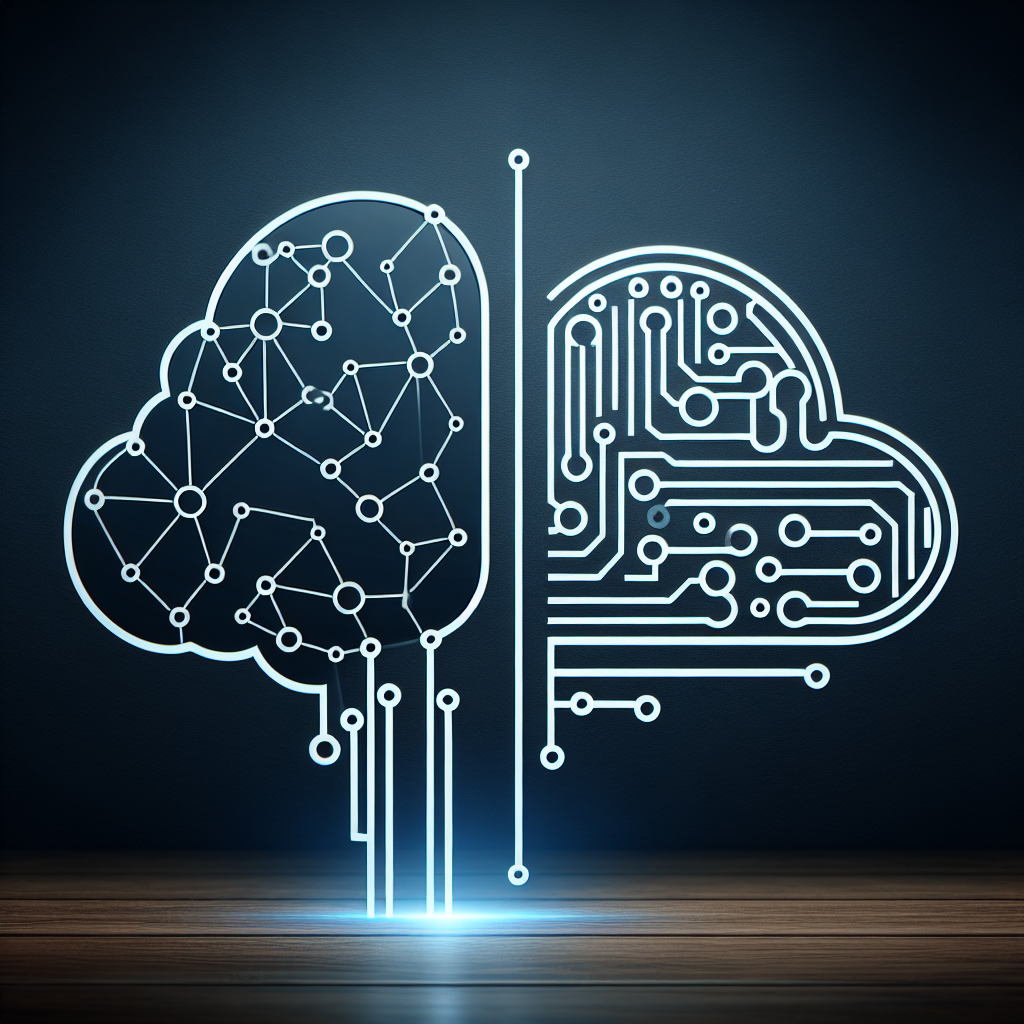The AI-Cloud Connection: Exploring the Future of Technology
Artificial intelligence (AI) and cloud computing are two of the most transformative technologies of our time. When combined, they have the potential to revolutionize industries, improve efficiency, and drive innovation. In this article, we will explore the AI-Cloud connection, its benefits, challenges, and future possibilities.
What is the AI-Cloud Connection?
The AI-Cloud connection refers to the integration of artificial intelligence algorithms and tools with cloud computing infrastructure. AI relies on vast amounts of data to learn, adapt, and make decisions, while cloud computing provides the necessary storage, processing power, and scalability to support AI applications. By combining AI and cloud computing, organizations can harness the power of AI to analyze data, automate processes, and improve decision-making, all within a flexible and scalable cloud environment.
Benefits of the AI-Cloud Connection
There are several key benefits to combining AI and cloud computing:
1. Scalability: Cloud computing provides the ability to scale resources up or down based on demand, allowing organizations to easily accommodate the computational needs of AI algorithms.
2. Cost-effectiveness: By leveraging the pay-as-you-go model of cloud computing, organizations can avoid the upfront costs of purchasing and maintaining expensive hardware, making AI more accessible to a wider range of businesses.
3. Flexibility: Cloud computing offers the flexibility to experiment with different AI models, algorithms, and tools without the constraints of on-premises infrastructure, enabling faster innovation and iteration.
4. Data accessibility: The cloud provides a centralized platform for storing, managing, and accessing large volumes of data, which is essential for training AI models and making informed decisions.
5. Collaboration: Cloud-based AI solutions enable real-time collaboration and sharing of resources among teams and departments, fostering a culture of innovation and knowledge-sharing.
Challenges of the AI-Cloud Connection
While the AI-Cloud connection offers many benefits, there are also challenges that organizations must address:
1. Security: Storing sensitive data in the cloud raises concerns about data security, privacy, and compliance. Organizations must implement robust security measures to protect data from cyber threats and unauthorized access.
2. Integration: Integrating AI tools and algorithms with existing cloud infrastructure and applications can be complex and time-consuming, requiring specialized expertise and resources.
3. Performance: The performance of AI algorithms can be impacted by latency, bandwidth limitations, and network congestion in cloud environments. Organizations must optimize their infrastructure to ensure optimal performance.
4. Cost management: While cloud computing offers cost savings in terms of hardware and maintenance, organizations must carefully manage their cloud usage to avoid unexpected costs and optimize resource utilization.
5. Data governance: Managing and governing data in the cloud is crucial for ensuring data quality, compliance, and accountability. Organizations must establish clear policies and procedures for data handling and access.
Future Possibilities of the AI-Cloud Connection
The AI-Cloud connection is poised to bring about significant advancements in technology and drive innovation in various industries. Some of the future possibilities of this integration include:
1. Personalized experiences: AI-powered personalization algorithms can analyze vast amounts of data in the cloud to deliver personalized recommendations, content, and services to users in real-time.
2. Predictive analytics: By leveraging AI and cloud computing, organizations can develop predictive analytics models that forecast trends, patterns, and risks, enabling proactive decision-making and strategic planning.
3. Autonomous systems: AI algorithms running on cloud infrastructure can enable the development of autonomous systems that can learn, adapt, and make decisions independently, leading to increased efficiency and productivity.
4. Edge computing: The combination of AI and cloud computing can facilitate edge computing, where AI algorithms are deployed on edge devices to process data locally, reducing latency and improving response times.
5. Industry-specific solutions: AI-powered cloud solutions tailored to specific industries, such as healthcare, finance, and manufacturing, can address unique challenges and opportunities, driving innovation and growth.
FAQs
Q: What are some examples of AI applications in the cloud?
A: Some examples of AI applications in the cloud include natural language processing (NLP), image recognition, predictive analytics, chatbots, and recommendation engines.
Q: How can organizations leverage the AI-Cloud connection to improve customer experience?
A: Organizations can use AI-powered cloud solutions to analyze customer data, personalize interactions, automate customer service, and deliver targeted marketing campaigns, enhancing the overall customer experience.
Q: What are some best practices for implementing AI in the cloud?
A: Some best practices for implementing AI in the cloud include defining clear objectives and use cases, selecting the right AI tools and algorithms, ensuring data quality and governance, optimizing infrastructure for performance, and monitoring and optimizing costs.
Q: What are the key considerations for ensuring data security in the AI-Cloud connection?
A: Key considerations for ensuring data security in the AI-Cloud connection include encrypting data in transit and at rest, implementing access controls and authentication mechanisms, monitoring and auditing data access, and complying with data privacy regulations.
In conclusion, the AI-Cloud connection represents a powerful convergence of technologies that has the potential to transform industries, drive innovation, and improve efficiency. By leveraging the scalability, flexibility, and cost-effectiveness of cloud computing with the intelligence and automation of AI, organizations can unlock new possibilities and create value in ways never before possible. As the AI-Cloud connection continues to evolve, organizations must address the challenges and embrace the opportunities to stay ahead in the rapidly changing digital landscape.

